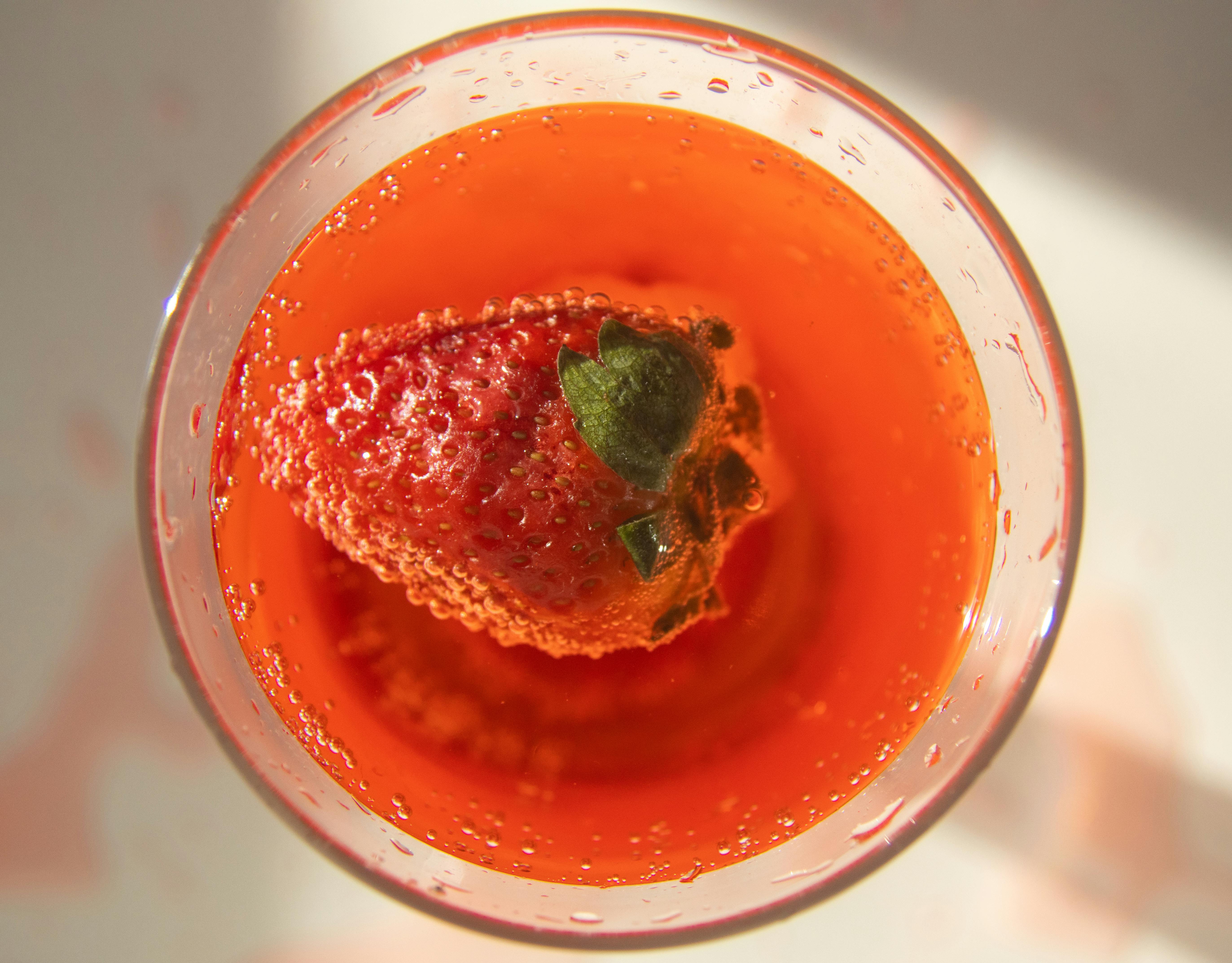Strawberries are among the most popular fruits in the world, and many people may not think twice about how they grow. But did you know that strawberries require sunlight to thrive? In this article, we’ll discuss how much sunlight strawberries need and how this affects their growth. We will also explore other factors that influence the success of strawberry plants. Read on to learn more about the importance of sunshine for these delicious fruits.Yes, strawberry plants need sunlight in order to grow and produce fruit. They need at least six hours of direct sunlight each day in order to thrive. If the plants receive too little sunlight, they may become weak and won’t produce as much fruit.
Benefits of Sunlight for Strawberry Plants
Strawberry plants require a significant amount of sunlight in order to thrive. Sunlight helps the plants to photosynthesize, which is essential for their growth. In addition, it helps to keep the soil warm and encourages pollination. Here are some of the benefits of sunlight for strawberry plants:
1. Photosynthesis: Photosynthesis is the process by which plants use sunlight to convert carbon dioxide and water into energy-rich molecules such as glucose. This energy is then used to fuel growth, flowering and fruit production. Without sufficient sunlight, strawberry plants won’t be able to photosynthesize efficiently and will not grow as well.
2. Soil Temperature: Sunlight helps to keep the soil warm, which is beneficial for strawberry plants. Warmer soil encourages root development and helps the plant absorb nutrients from the soil more easily. It also reduces the risk of disease and pest infestations.
3. Pollination: Sunlight also helps with pollination of strawberry plants. Pollen from male flowers needs to be transferred to female flowers in order for fertilization to occur and fruits to form. Without sufficient sunlight, pollination may not occur efficiently.
These are just some of the benefits that sunlight provides for strawberry plants. To ensure that your strawberry plants get enough sunlight, make sure that they are planted in an area where they will receive at least six hours of direct sunlight each day.
How Much Sunlight is Required for Strawberry Plants?
Strawberry plants require a lot of sunlight to thrive. Generally, 6-8 hours of direct sunlight a day is ideal for most varieties of strawberries. When choosing a location to plant your strawberries, make sure it gets plenty of direct sunlight throughout the day. If the area doesn’t get enough sun, the plants may not produce as much fruit or grow as vigorously as they would otherwise.
One way to ensure your strawberry plants get enough sun is to plant them in containers or raised beds that can be moved around. This allows you to move the plants to areas that get more sun during certain times of day, or even move them indoors when needed.
In addition to adequate sunlight, strawberry plants also need plenty of water and nutrients to thrive. Make sure you water them regularly and provide them with fertilizer if needed. Also be sure to keep weeds away from the plants as they can compete with the strawberries for resources such as water and nutrients.
Overall, strawberry plants need plenty of direct sunlight in order to grow and produce fruit. Make sure you choose a location that gets at least 6-8 hours of direct sunlight a day and provide the other necessary resources such as water and fertilizer for optimal growth and fruit production.
What Happens When Strawberry Plants Don’t Get Enough Sunlight?
Strawberry plants, like many other plants, require adequate sunlight in order to thrive. Without enough sunlight, they will not be able to grow and produce fruit. Without adequate sunlight, the leaves of the strawberry plant will start to turn yellow and eventually die off. The plant will also become very weak and susceptible to disease and pests. The fruit that does develop may be smaller than usual and may not have a good flavor.
Without enough sunlight, the strawberry plants will also not produce enough energy to survive. This means that they will not be able to store enough energy in their roots or leaves for future growth. This can lead to the plant becoming stunted or wilting under the stress of too little sun.
In addition, if a strawberry plant does not receive enough sunlight it can affect its flowering ability as well as its ability to set fruit. If there is not enough light for photosynthesis then the flower buds may never open or may open late in the season when pollinators are fewer and far between and fewer fruits are produced.
In summary, it is important for strawberry plants to receive adequate sunlight in order for them to thrive and produce good quality fruit. Without adequate amounts of light, the plant’s leaves may start to yellow and die off, flowers won’t open properly leading to fewer fruits being produced and the overall health of the plant will suffer leading to stunting or wilting of the plant.
Is There Such a Thing as Too Much Sunlight for Strawberries?
Strawberries are a popular fruit that is enjoyed by people of all ages. They are often planted in home gardens or purchased from local farmers markets. While they require plenty of sunlight to grow and produce healthy fruits, there is such a thing as too much sun for strawberries. Too much sun can cause the leaves to burn and the fruit to become over-ripened and unappetizing. Additionally, it can lead to fungal diseases and other problems.
Strawberries need at least six hours of direct sun each day to thrive, but any more than eight hours may cause more harm than good. When temperatures are too high and sunlight is excessively strong, the leaves can become scorched and the plant itself can become stressed. This reduces its ability to produce high-quality fruit that is ripe enough for consumption.
When planting strawberries, it’s important to select a location with partial shade that will protect the plants from too much sunlight during the hottest parts of the day. During summer months, this may mean finding an area where trees or other plants provide some sort of cover from direct sunlight during midday hours. Additionally, if planting in a garden bed, be sure to water regularly during dry periods so that the strawberry plants don’t suffer from dehydration due to excessive heat and sun exposure.
In addition to providing adequate shade during very hot days, gardeners should also use mulch around their strawberry plants in order to reduce water evaporation and help keep their roots cool. This will also help reduce weeds which compete with the plants for moisture and nutrients from the soil. Furthermore, it is important not to overcrowd your strawberry plants as this leads to decreased air circulation which can lead to fungal diseases such as powdery mildew or gray mold.
In conclusion, while strawberries need plenty of sunlight in order to produce healthy fruits, there is such a thing as too much sun exposure which can lead to leaf burn and other problems. Gardeners should be sure to provide adequate shade during hot days while also using mulch around their strawberry plants in order reduce water evaporation and weeds while promoting air circulation around all of their plants.

Sunlight Requirements for Strawberry Plants
Strawberry plants require a minimum of six hours of direct sunlight each day to remain healthy and produce an abundant crop of high-quality fruit. The plants should be planted where they will not be shaded by trees, buildings, or other structures. A south-facing location is ideal, as it will provide the most sunlight throughout the day. If a south-facing location is not available, however, the plants can still flourish in east or west facing locations that receive at least six hours of direct sunlight per day. It is important to note that too much sunlight can be detrimental to the health of strawberry plants, so it is important to choose a location wisely.
Water Requirements for Strawberry Plants
Strawberry plants require regular watering to produce an abundant crop of high-quality fruit. The soil should be kept consistently moist, but not saturated or overly wet. In general, an inch of water per week is recommended during the growing season; however, more frequent watering may be necessary depending on the climate and soil conditions in your area. Proper drainage is also essential; if the soil does not drain well, consider planting your strawberries in raised beds or containers with good drainage holes.
Fertilizer Requirements for Strawberry Plants
Strawberry plants benefit from regular fertilization throughout their growing season. Fertilizers should be applied at least every 4-6 weeks during the growing season; however, more frequent applications may be necessary depending on soil fertility and climate conditions in your area. It is best to use a balanced fertilizer that contains nitrogen, phosphorus, and potassium; organic options such as compost or manure are also beneficial for strawberry plants.
Shade Requirements for Strawberry Plants
Strawberry plants prefer full sun but can tolerate a light amount of shade throughout the day. If possible, they should be planted in an area that receives at least six hours of direct sunlight per day and no more than two hours of midday shade each day. If you are planting in an area with more than two hours of midday shade each day, it is important to select varieties that are specifically adapted to areas with higher levels of shade.
Can Strawberries Grow in Artificial Light?
Yes, strawberries can be grown in artificial light, such as grow lights. Growing strawberries in artificial light can be an effective way to produce a high-quality crop of this popular fruit. Artificial lighting can also be used to extend the growing season of strawberries and provide a greater variety of produce for consumers.
Growing strawberries under artificial light is different than growing them outdoors in the sun. The artificial lights need to be adjusted according to the specific needs of the plants. Different types of light bulbs will provide different amounts of light and will need to be adjusted according to the growth stage of the strawberry plants.
In order for strawberries to thrive under artificial light, they need full spectrum lighting that provides enough intensity and duration for them to grow and produce fruit successfully. The intensity must also be adjusted according to the growth stage of the plants, as too much or too little light can cause issues with growth and fruiting.
It’s also important that strawberry plants receive enough ventilation when they are grown under artificial lights. If not, they may become susceptible to disease or pests due to poor air circulation. Additionally, it’s important that they receive adequate water and nutrients so that they can produce healthy fruit.
Overall, growing strawberries under artificial light can be successful if it is done correctly and with adequate attention paid to the specific needs of the plants. It is an effective way for growers to extend their growing season and provide consumers with a greater variety of produce year-round.
Heat Tolerance of Strawberry Plants
Strawberries are one of the most popular fruits in the world and they are grown in many countries. Strawberries require warm temperatures to thrive and produce sweet, juicy fruit. However, too much heat can be detrimental to strawberry plants and can cause a variety of problems. It is important for growers to be aware of the optimal temperature range for their strawberry plants in order to ensure healthy growth and good yields.
The ideal temperature range for strawberry plants is between 50-85°F (10-30°C). Anything above 85°F (30°C) can cause heat stress in the plants, resulting in poor growth and lower yields. In extreme cases, high temperatures can even kill off some of the plant’s roots and leaves. In order to prevent this from happening, it is important for growers to provide adequate shade and ventilation around their strawberry plants during periods of high heat.
In addition to providing shade and ventilation, growers can also take steps to protect their plants from excessive heat by using mulch or plastic sheeting around them. This will help keep the soil cool and reduce moisture loss from evaporation. Additionally, water regularly during hot weather to keep the soil moist and reduce stress on the plants. Finally, when temperatures exceed 90°F (32°C), it is important to provide extra protection by using shade cloth or other material that will block out some of the sun’s rays.
By taking steps to protect their strawberry plants from excessive heat, growers can ensure that their crops will remain healthy and productive despite adverse weather conditions. With proper care and attention, strawberries can be grown successfully even in hot climates with very little risk of damage from extreme temperatures.

Conclusion
Strawberries are a popular fruit that can be eaten fresh or used in a variety of recipes. They need adequate amounts of sunlight to grow and thrive, but too much direct sunlight can harm the plant. Sunlight is essential for photosynthesis, which provides the plant with energy to grow and reproduce. The best way to ensure healthy and successful strawberry growth is to provide them with an appropriate amount of sun exposure each day. Providing them with too little or too much sun can lead to stunted growth, poor yields, or even death.
Overall, strawberries need a moderate amount of sunlight each day in order to remain healthy and productive. They should be placed in a location where they will receive at least 6 hours of direct sunlight per day, but no more than 8 hours per day. With the right amount of sunlight and care, strawberries can be an excellent addition to any garden or landscape.
Providing strawberries with the right amount of sun exposure is just one step towards successful strawberry cultivation. They also require adequate amounts of water, nutrients, and soil preparation in order to thrive and produce healthy fruit. Taking the time to properly care for your strawberry plants will help ensure that you have a successful harvest each year!



